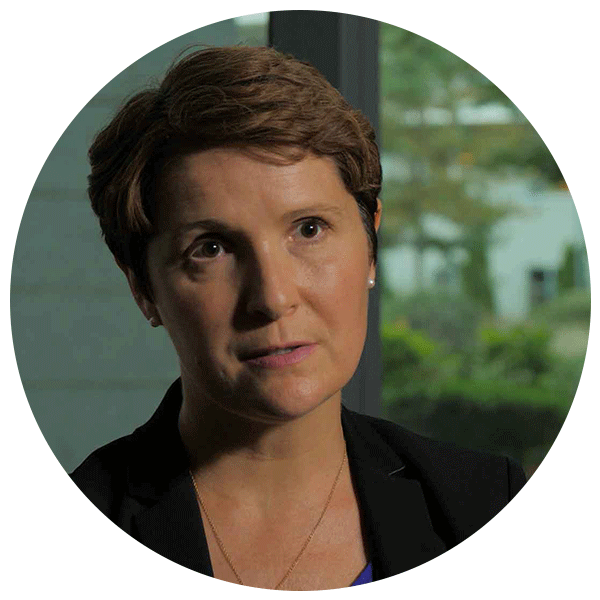The Alberta Family Wellness Initiative (AFWI) mobilizes knowledge about early brain development and its connection to lifelong physical and mental health, including addiction. We bring together stakeholders from many callings to collaborate on health solutions that will directly impact families and individuals.
Academy on Violence and Abuse was created to address the concerns highlighted in a 2002 report released by the Institute of Medicine (IOM). The report, which challenged the health care community to better educate and train health professionals about the often-unrecognizable health effects of violence and abuse, inspired a group of health care professionals to converge in effort to gain recognition and understanding for violence and abuse as health care issues. Their goal is to continue expanding health education and research to integrate knowledge about violence and abuse into the training of all health professionals to promote safe families, safe workplaces and safe communities.
ACEs Connection is a social network that supports communities to accelerate the global ACEs science movement. There over two hundred ACEs Connections sites that support local ACEs initiatives in neighborhoods, cities, counties, regions and states across the country. (There are also a few interest-based communities, such as ACEs in Education and ACEs in Pediatrics.) Also, there are community facilitators in the Northeast/Mid-Atlantic, Southeast, Midwest, West, Northwest, and three in California that work with local communities to start and grow ACEs initiatives. ACEs Connection also disseminates information packets about how to start an ACEs initiative or expand ones that is just getting started.
ACESTooHigh is a news site that reports on research about adverse childhood experiences, including developments in epidemiology, neurobiology, and the biomedical and epigenetic consequences of toxic stress. The Organization also covers how people, organizations, agencies and communities are implementing practices based on the research. This effort includes developments in education, juvenile justice, criminal justice, public health, medicine, mental health, social services, and cities, counties and states.
American Academy of Pediatrics – The Trauma Toolbox for Primary Care is a 6-part series was designed with the primary care practice in mind – those who may or may not be familiar with adverse childhood experiences (ACEs) and the process of asking families about exposure to ACEs or other traumatic events.
American Psychiatric Association is an organization of psychiatrists working together to ensure humane care and effective treatment for all persons with mental illness, including substance use disorders. It is the voice and conscience of modern psychiatry. Its vision is a society that has available, accessible quality psychiatric diagnosis and treatment.
America’s Promise Alliance is devoted to helping to create the conditions for success for all young people, including the millions currently being left behind.
Anxiety and Depression Association of America (ADAA) is an international nonprofit organization dedicated to the prevention, treatment, and cure of anxiety, depression, OCD, PTSD, and co-occurring disorders through education, practice, and research. ADAA focuses on improving quality of life for those with these disorders. ADAA provides education about the disorders and helps people find treatment, resources, and support.
Brazelton Touchpoints Center collaborates with partners nationwide to establish scalable and sustainable, low-cost, low-tech interventions that propel children’s healthy development and build the internal capacity of – and strengthen the collaborative relationships among – families, parents, caregivers, providers, and communities.
The California Endowment is a private health foundation that provides grants to community-based organizations throughout California. The foundation is currently investing in the development of school-wide models that teach educators, school staff, and students about the impact of childhood trauma, along with strategies for healing and building resilience.
Campaign for Trauma-Informed Policy and Practice’s mission is to create a resilient, trauma-informed society where all individuals and families have the opportunity and the supports necessary to thrive.
The Centers for Disease Control and Prevention has set up an informational hub for information on the original Adverse Childhood Experiences study and many of the academic studies that followed the publication of the original study.
Got Your ACE Score? As an exercise for the screening, you might want to print out copies of the Adverse Childhood Experience questionnaire for viewers to fill out. This will give them a sense of how the ACEs Study was conducted and also help them contextualize their own life experiences through the lens of the ACEs Study. Be sure to be cautious in asking attendees to discuss their results with the rest of the group; many of the experiences asked about in the ACEs questionnaire have the capacity to be deeply traumatic. You might consider asking them what their final score was, but they should not be asked to share which experiences they’ve had unless they choose to.
The Center on the Developing Child at Harvard University is a leading organization in the field of early childhood development science. Headed by Jack P. Shonkoff, M.D., the Center is dedicated to building a research and development platform for science-based innovation that achieves breakthrough outcomes for children facing adversity and transforming the policy and practice landscape to support and demand change. Their website contains a wide array of resources based on the work of the National Scientific Council on the Developing Child covering topics such as adverse childhood experiences, toxic stress, and fostering resilience.
The Centre for Studies on Human Stress (CSHS) is dedicated to improving the physical and mental health of Canadians by empowering individuals with scientifically grounded information on the effects of stress on the brain and body.
Center For Youth Wellness is part of a national effort to revolutionize pediatric medicine and transform the way society responds to kids exposed to significant adverse childhood experiences and toxic stress. Led by founder and CEO Dr. Nadine Burke Harris, CYW was created to respond to an urgent public health issue: early adversity harms the developing brains and bodies of children. In partnership with Bayview Child Health Center, CYW screens every young person it sees for Adverse Childhood Experiences (ACEs). The organization heals children’s brains and bodies by piloting treatments for toxic stress and sharing our findings nationally. CYW’s goal is to prevent toxic stress by raising awareness among those who can make a difference: from parents and pediatricians to policy makers.
Child Mind Institute is an independent, national nonprofit dedicated to transforming the lives of children and families struggling with mental health and learning disorders. Our teams work every day to deliver the highest standards of care, advance the science of the developing brain and empower parents, professionals and policymakers to support children when and where they need it most.
Child Trauma Academy (CTA) is a not-for-profit organization based in Houston, Texas working to improve the lives of high-risk children through direct service, research and education.
Children’s Home Society of America is a national nonprofit leader and advocate dedicated to improving the lives of children and families in America.













